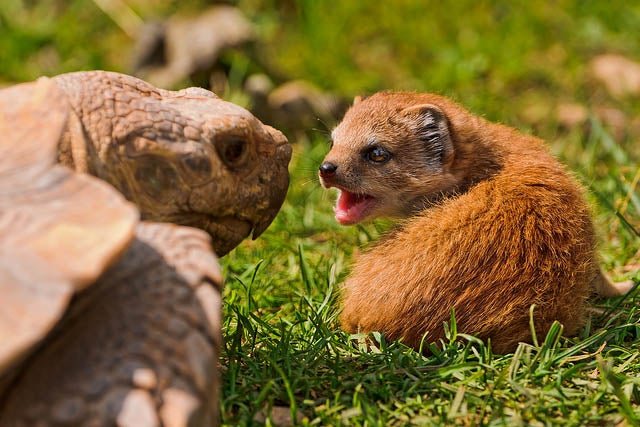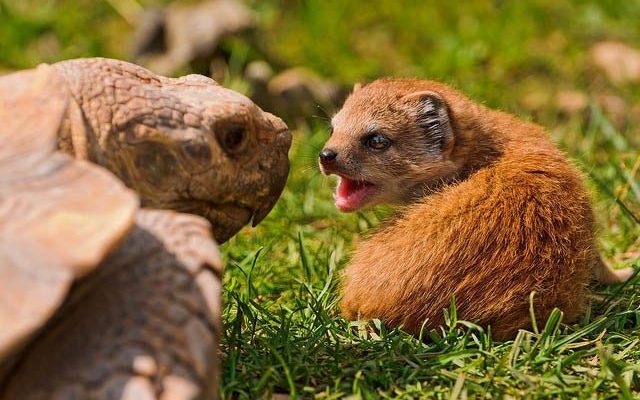
In many ways, the mongoose is nature’s very own pest control specialist, helping manage populations of pests, and taking on the occasional snake without breaking a sweat. A member of the family Herpestidae, these mammals come in various species, each with its own quirks and habits. Let’s dive deeper into understanding the mongoose and the fascinating role it plays in its environment.
Understanding the Mongoose: A Quick Overview
Mongoose species can be found in Africa, Asia, and even some parts of Europe. Ranging from the small, tail-less dwarf mongoose to the larger and more social banded mongoose, these animals exhibit a variety of behaviors. With their slender bodies, short legs, and elongated snouts, they’re built for fast, agile movements. Think of them like tiny gymnasts, flipping and scurrying through tall grasses and rocky crevices.
What’s really interesting is their social structure. Some species prefer a solitary lifestyle, while others, like the social mongoose, thrive in groups. This setup not only aids in hunting and protection against predators but also strengthens their role in the ecosystem. Group dynamics are crucial when it comes to surviving in the wild, and the mongoose shows us how teamwork can make all the difference.
The Mongoose as a Pest Controller
One of the mongoose’s most vital roles is that of a pest controller. In many ecosystems, overpopulation of small animals, like rodents, can cause issues for local flora and fauna. That’s where our furry friend comes in. By preying on rodents and other small pests, mongooses help maintain a healthy balance in their habitats.
You’re probably wondering what types of creatures they target. Mongooses commonly feast on:
- Rats
- Gerbils
- Insects
Their diet not only prevents these animals from overpopulating but also supports the growth of plants and crops. With fewer pests around, plants have a better chance to thrive. So, in a way, mongooses contribute to the overall health of their ecosystems, boosting biodiversity and enriching the environment. You could say they’re the unsung heroes of the animal kingdom!
Mongooses and Snake Management
If you’ve seen a mongoose in action, you might know about its legendary battles with snakes. With their quick reflexes and remarkable agility, mongooses are one of the few predators that can take on venomous snakes, like cobras! It’s a thrilling spectacle to witness. But beyond the drama, this behavior is crucial for both the mongoose and the ecosystem.
By controlling snake populations, mongooses help prevent these reptiles from becoming a threat to local wildlife or even humans. They offer an important service: keeping the ecosystem in check. When these small mammals hunt snakes, they also help maintain the balance between different species, ensuring no one group overtakes another.
Mongooses as Seed Dispersers
Not only do mongooses help control pest populations, but they also play a role in plant reproduction. How? Well, by eating fruits and seeds, they help in seed dispersal. You see, some seeds need to travel a bit before they can sprout effectively. When mongooses munch on fruits, they often carry the seeds in their digestive systems. After a few hours, they deposit the seeds far from the parent plant in their droppings.
This scattering of seeds allows plants to spread and thrive in new areas. It’s a beautiful cycle: the mongoose gets its nutrients, and the plants get a chance to grow in fresh soil. It’s almost like they’re nature’s little gardeners, facilitating growth wherever they roam.
Social Behavior and Learning in Mongooses
The social behavior of certain mongoose species is not just fascinating; it’s also integral to their role in the ecosystem. With cooperation and communication, mongooses can hunt more effectively. For instance, when searching for food, a group of mongooses may take turns keeping watch for predators, allowing others to forage safely.
This kind of teamwork doesn’t just keep the mongooses safe; it helps keep the ecosystem balanced. When one member of the group learns to hunt better or find food more efficiently, the entire group benefits. So, their social structure strengthens not only the individuals within the group but also the dynamics of the ecosystem as a whole.
Threats Facing Mongooses and Their Ecosystems
Unfortunately, mongooses face several threats that can impact their populations and, consequently, the ecosystems they inhabit. Habitat loss, due to urbanization and agriculture, poses a significant risk. When their homes are destroyed, mongooses struggle to find food and shelter.
Additionally, the introduction of invasive species can disrupt their natural habitats. For example, in some areas, mongooses were introduced to control rat populations, but they ended up preying on native wildlife instead. This change shifted the balance in local ecosystems, leading to declines in some native species. It’s a reminder that while mongooses play vital roles in their environments, they are not immune to the challenges humans can create.
How You Can Help Mongooses
If you’re as fascinated by mongooses as I am, you might wonder how you can assist these amazing creatures. One way is to support conservation efforts aimed at preserving their natural habitats. Here are some simple steps you can take:
- Educate others about the importance of mongooses in ecosystems.
- Support wildlife protection initiatives and organizations.
- Spread awareness about the impacts of invasive species.
By taking these steps, you help ensure that mongooses can continue their essential roles in their ecosystems. Every little bit counts when it comes to protecting our planet’s diverse wildlife!
In conclusion, the mongoose is more than just a small, cute animal—it’s a vital player in ecological balance. From pest control to seed dispersal, these creatures contribute to a healthy ecosystem. Understanding their role allows us to appreciate their importance and take steps toward their conservation. So, the next time you hear about mongooses, remember their significant impact in the wild, and maybe consider supporting their survival. After all, we share this beautiful planet, and every creature has its part to play!

